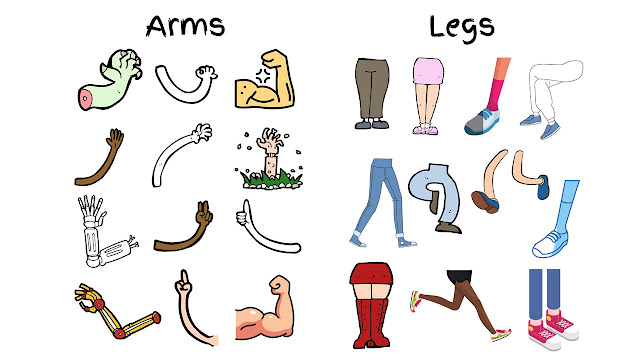Hi! I've contributed to a biannual e-magazine for teachers. Sometimes, I adapted teaching ideas from the issues that were published. It goes way back to 2012 and it's nice to see how the content has developed over the years.
Tabs under construction!
Sunday, January 17, 2021
Sunday, January 3, 2021
Reads: The Allegory of the Cave
When I first heard of Plato's Cave, I thought it was a memorable story relating to life. If you do some research, there are some slight variations of the story online. But here's my understanding:
Plato the Greek Philosopher wanted Socrates to compare the effects of education and the lack of it. So, he told him to imagine some people imprisoned in a cave. Without natural lighting in it, the interior was damp and dark. They have always live there, oblivious to the outside world.
All the people could see were the shadows cast by a fire behind them. The shadows were things that belonged to the people. The inhabitants were fascinated by the reflections of the objects (animals, plants, people). They assumed that the shadows were real and that if they pay attention to them, they would be successful in life. For the cave dwellers, the shadows were their reality. The people discussed about the shadows and had taken pride in their sophistication and wisdom.
One day, someone managed to leave the cave, into the open space. The natural light would first be overwhelming. Everything would be overly illuminated and gradually his eyes adjusted and he encountered the real forms of all objects which he had formally falsely known of as shadows. He saw actual flora and fauna, colours of the sky, texture of the tree bark. He observed the stars and took in the vastness of the universe.
With his new discovery, the man returned to the cave to attempt to share his new knowledge with his companions. Along the way, he needed to once again navigate the darkness while his eyes adjust. The man would try to convince the rest that what he had experienced was better than life in the cave. Instead, his intention was not taken well.
The symbolism in the allegory alerts us to the nature of perception. What we see or think we know might not always be the truth.
That said, if we behave like the man who went out of the cave and bluntly tell our students or even parents that they are wrong, we get nowhere, cause offense and may put people in difficult situation.
The solution is education according to Plato using the inquiry method pioneered by Socrates known as Socratic Method. Because it's a gentle process, often investigating the answers together by thinking and interacting. The students may be oozing with confidence saying that they had already know the answer to which you have to remain patiently kind. Bring them back on track if they go off topic. It takes time to chat about the same topic drawing out students' thoughts.
This method is built on the confidence that with nurturing, students can develop critical thinking and detect flaws in their reasonings. As a teacher, we can gently draw their attention to tricky issues because nobody can learn if we make them feel bad about themselves.
Monday, December 21, 2020
Cool sites to explore
These are some cool links that I've came across. A pity there were a lot more but most of the links doesn't work anymore. Will continue to add on to the list:
Sunday, November 29, 2020
Artventures: Art Teachers as Bloggers Part 2 Q&A
How often do you post? How much content is in each post?
Sunday, November 22, 2020
Artventures: Art Teachers as Bloggers
Monday, November 16, 2020
Sunday, November 8, 2020
Art Class: Colouring with Lines
The children are learning to colour with lines. We reviewed the different types of lines and watched a video on how to apply them in colouring. I like using A3-sized papers with the younger children as it allows them to draw sizable objects. My art tutor used to say coloured pencils are the hardest medium to master for young kids. It's quite unimaginable since it is such a common practice for children to own coloured pencils. I hardly use them in art class because first, the children would take too much effort to cover the entire drawing paper and many would complain that their wrists are tired.
Another reason is the different brands of coloured pencils yield different amount of colour pigments. There are some types where no matter the amount of strength you exert to colour, the colours would always appear very faint. The visual impact is futile. Furthermore, they would appear almost invisible on digital images. Coloured markers were provided for the children to prevent the mentioned disparities. I want the children to feel proud of their achievements and more confident with each project.













